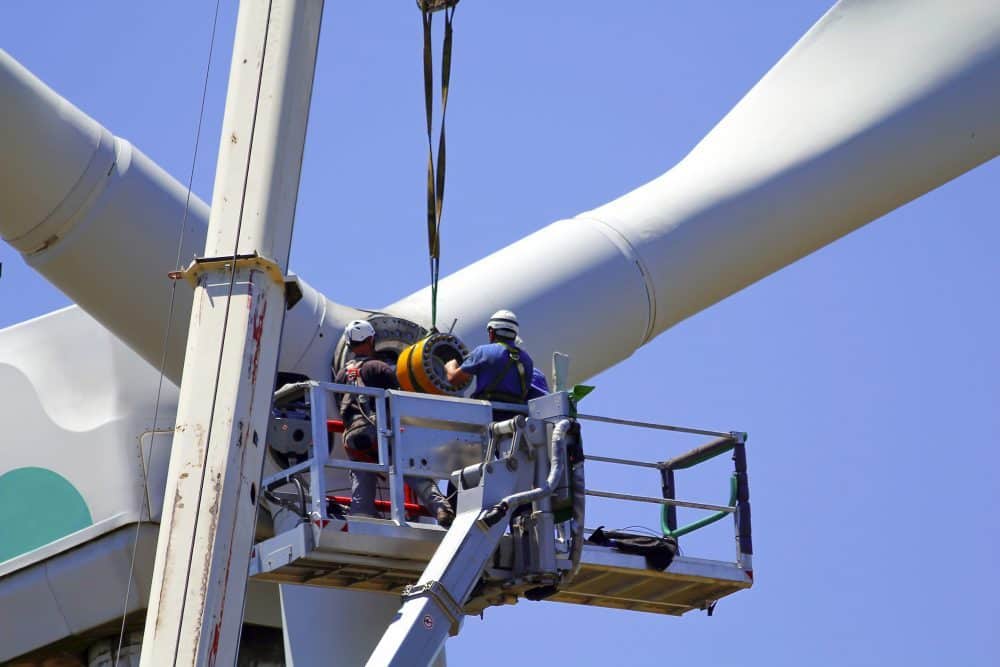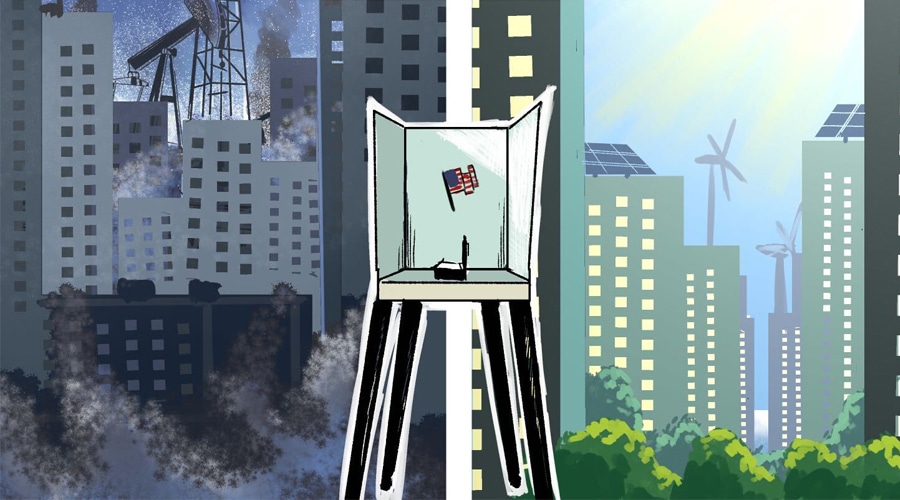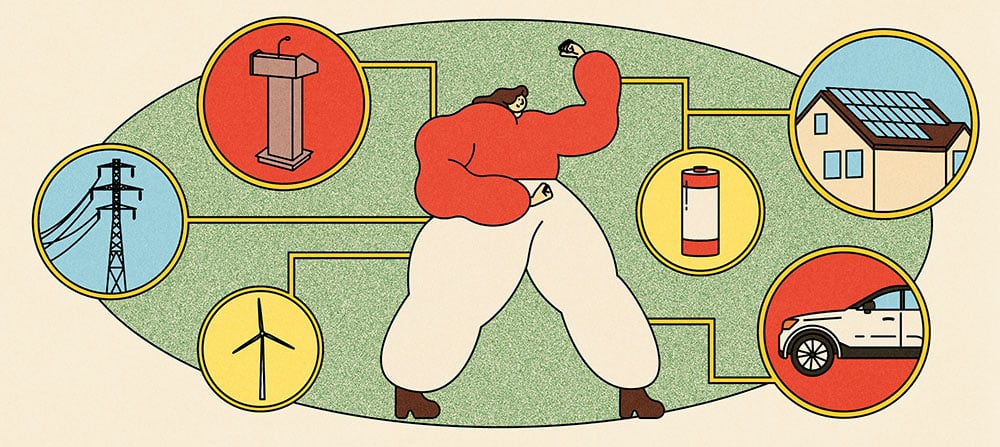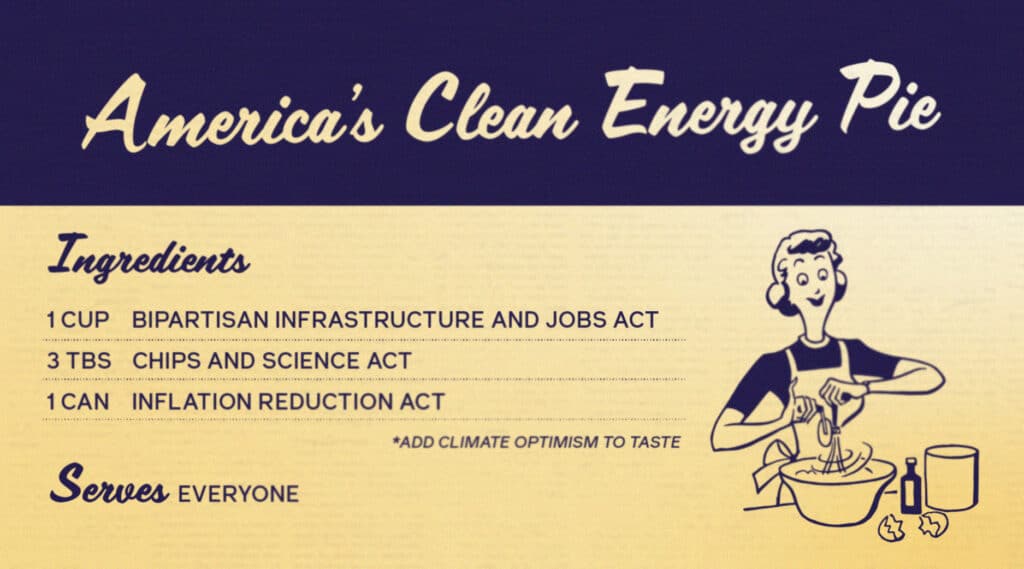There’s been a lot of political back and forth recently about whether clean energy is a job killer or a job creator. Some like to present a false choice between acting on climate and clean energy vs. bolstering our economy. So, let’s set the record straight: clean energy is a massive economic opportunity that will continue to create well-paying jobs across multiple sectors. Not only will it help the U.S. recover from today’s COVID-induced economic recession, but it’s also key to the nation’s efforts to transition to a low-carbon future. Let’s look at the numbers and then close this case for good.
Last month, the U.S. workforce totaled around 160 million people (down 4 million from a year before) and unemployment stood at 7.9 percent, nearly double the rate of last year. To get the economy booming again, millions of Americans will need to return to work. That’s why, in recent months, calls have accelerated for a “green recovery,” with proposals promising anywhere from 1.2 million jobs in green manufacturing to an additional 10 to 20 million jobs in clean energy.
Three recent analyses only strengthen the employment case for speeding our transition to clean energy:
Exhibit A: Why mobilizing for a “zero carbon America” creates gobs of jobs

An exhaustive new report released this summer concludes that aggressively transitioning to a clean energy economy by 2035 could create as many as 25 million more jobs in the near term, and then 5 million energy jobs in perpetuity. Completely decarbonizing the U.S. economy means going well beyond energy efficiency measures: it involves electrifying almost everything and powering the grid with renewables. This would reduce the nation’s energy demand by 50 percent and bring huge cost savings through economies of scale.
Importantly, the energy transition would create many more jobs than would be lost. That’s because the decarbonized future is more labor intensive than today’s energy industry. In the short term, jobs would be created as we build out the capacity to make and install the electric vehicles, heat pumps, wind turbines, solar cells, batteries, and other machines required for the shift. Long term, jobs would be needed for ongoing installation and maintenance. Meanwhile, existing fossil fuel jobs would decline only gradually, over the course of a generation, and in many cases, the new clean energy jobs will look very similar to those that exist today (truck driving, construction, machining, etc.).
Exhibit B: Taxing carbon to boost renewables and create even more jobs
A second analysis, published in Scientific American last December, looked at the employment effects of taxing carbon emissions from fossil fuels—a key element of the proposed Green New Deal. The authors conclude that a $25 carbon tax would boost U.S. employment by an estimated 72 million job years (one job for one year) over the next three decades. In this case, the carbon tax would effectively transform the electricity system—triggering investments in low-cost but labor-intensive clean tech and thereby fostering economic growth and employment. Jobs in energy efficiency (mainly labor-intensive installation and construction) would grow from 1.8 million in 2030 to 4.2 million in 2050, and would more than compensate for the losses in traditional jobs on the energy supply side. Additional jobs would relate to investments in energy and environmental management and smart controls, as well as the manufacturing of industrial machinery like high-efficiency motors and variable-speed drives.
Exhibit C: Transitioning to 100% wind, water and solar energy and—you guessed it—creating jobs
A third study, led by Stanford University researchers, considers the economic and employment impacts of a U.S. (and global) transition to 100% “WWS energy”—that is, a shift away from business as usual to an energy system based 100% on wind, water, and solar energy (alongside energy efficiency and storage) by 2050. According to the analysis, such a transition would create 3.1 million net long-term, full-time U.S. jobs as a result of energy generation, transmission, and storage. These include direct jobs like project development and onsite construction, operation, and maintenance of electricity-generating facilities as well as indirect jobs in the construction and manufacturing supply chains and new positions for manufacturers, analysts, attorneys, bankers, etc. The reinvestment and spending of earnings from these direct and indirect jobs would, in turn, support further jobs.

How much investment are we talking?
Of course, the big questions in all cases are: 1) how much would an investment in clean energy cost, and 2) is this feasible, especially given the urgency of the timeline. Most studies agree that the needed investment is large—in the trillions of dollars—but this would be greatly offset by cost savings along the way. Moreover, the burden for everyday Americans would be minimal, if any. The authors of the first report conclude that the average U.S. household would save between $1,000 and $2,000 a year through the proposed mobilization for clean energy, and people would still continue to meet their essential energy and transport needs, just using electric and renewable technologies. “It’s a little bit easier than we think, because we need less energy than we need today to do it, and it involves a lot less sacrifice…. I don’t think there’s a lot of austerity absolutely necessary,” noted co-author Saul Griffith.
To be fair—and this is a critical point—the clean energy transition isn’t just some “future prospect” open to theory and speculation. It’s already under way. Every day, more and more Americans are embracing technologies ranging from rooftop solar to electric vehicles, and the U.S. wind and solar industries are creating tens of thousands of new jobs annually. Meanwhile, jobs in coal-fired generation fell nearly 8 percent in 2019. The writing is on the wall for fossil fuels, and the sooner we accept the inevitability of the transition, the sooner we can accelerate it. “Ultimately we will have a stronger, more resilient, better-prepared nation in the future, with a healthier populace, if we do it,” notes Griffith.
So let’s ditch the false choice between climate and jobs. The sooner we accept this reality, the better off we’ll be. Check out the Vote Clean Energy 2020 campaign, which is all about equipping you to show your support for clean energy during this critical election season.















